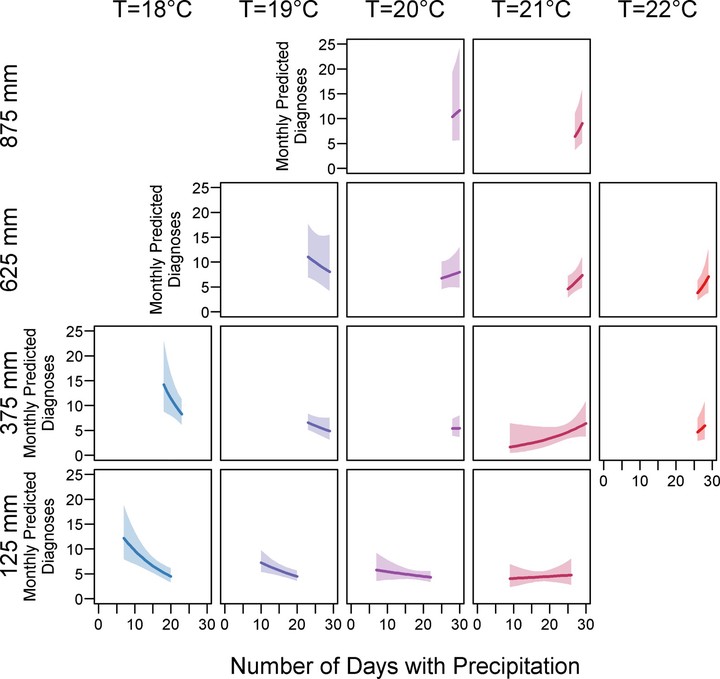
Abstract
Season is a major determinant of infectious disease rates, including arboviruses spread by mosquitoes, such as dengue, chikungunya, and Zika. Seasonal patterns of disease are driven by a combination of climatic or environmental factors, such as temperature or rainfall, and human behavioral time trends, such as school year schedules, holidays, and weekday-weekend patterns. These factors affect both disease rates and healthcare-seeking behavior. Seasonality of dengue fever has been studied in the context of climatic factors, but short- and long-term time trends are less well-understood. With 2009-2016 medical record data from patients diagnosed with dengue fever at two hospitals in rural Ecuador, we used Poisson generalized linear modeling to determine short- and long-term seasonal patterns of dengue fever, as well as the effect of day of the week and public holidays. In a subset analysis, we determined the impact of school schedules on school-aged children. With a separate model, we examined the effect of climate on diagnosis patterns. In the first model, the most important predictors of dengue fever were annual sinusoidal fluctuations in disease, long-term trends (as represented by a spline for the full study duration), day of the week, and hospital. Seasonal trends showed single peaks in case diagnoses, during mid-March. Compared to the average of all days, cases were more likely to be diagnosed on Tuesdays (risk ratio (RR): 1.26, 95% confidence interval (CI) 1.05-1.51) and Thursdays (RR: 1.25, 95% CI 1.02-1.53), and less likely to be diagnosed on Saturdays (RR: 0.81, 95% CI 0.65-1.01) and Sundays (RR: 0.74, 95% CI 0.58-0.95). Public holidays were not significant predictors of dengue fever diagnoses, except for an increase in diagnoses on the day after Christmas (RR: 2.77, 95% CI 1.46-5.24). School schedules did not impact dengue diagnoses in school-aged children. In the climate model, important climate variables included the monthly total precipitation, an interaction between total precipitation and monthly absolute minimum temperature, an interaction between total precipitation and monthly precipitation days, and a three-way interaction between minimum temperature, total precipitation, and precipitation days. This is the first report of long-term dengue fever seasonality in Ecuador, one of few reports from rural patients, and one of very few studies utilizing daily disease reports. These results can inform local disease prevention efforts, public health planning, as well as global and regional models of dengue fever trends.